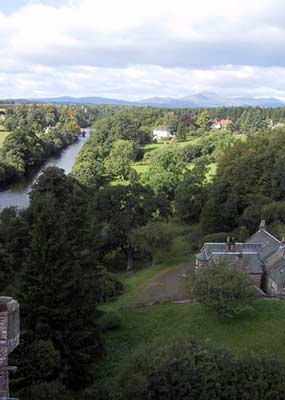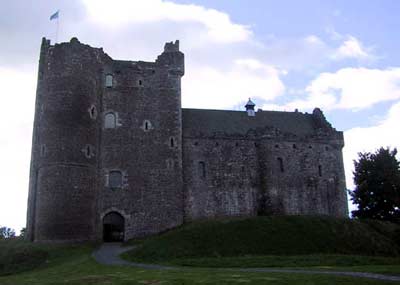
Mary, Queen of Scots Home Page

| The town of Doune lies on a narrow tongue of land at the junction of the River Teith and Ardoch Water, and was defended from early times. Evidence of Prehistoric and Roman settlements was found, and it is possible that there was an earlier earthen construction on the site of the present castle. Doune's position at the cross road of routes from the south to the north and west, made it an extremely enviable stronghold in the middle ages. It is likely that there was a bridge over the Teith long before the first recorded bridge of 1535. Doune's importance began to decline with the emergence of more settled conditions in the 17th century. However, it was garrisoned in the 17th and 18th centuries when the Stuart dynasty attempted to regain the throne. | |
 |
Click here to see a reconstruction of the castle.  |
| Although the exact date is not known, it is Robert Stewart, first Duke of Albany who built Doune Castle sometime between 1388 and 1398. The Duke virtually ruled Scotland during the reign of Robert III and the imprisonment in England of young King James I. His son Murdoch continued construction after his father's death in 1420 but irregularities in the structure suggest that plans were altered on several occasions, and never completed. The castle is an irregular pentagon within high curtain walls, and the gatehouse facing the approach to the site from the north. A second, smaller gate was placed in the west wall from which defenders of the castle could come out unobserved. James I had Murdoch executed after his liberation in 1424. Doune served as a royal hunting lodge and was occasionally used by Mary, Queen of Scots. Doune was held by forces loyal to her until 1570. | |
| Click here to visit the inside of Doune Castle. | |
| Open all year but not Thursdays pm and Fridays from October to March. Tel.: 44+(0)1786 841 742. | |